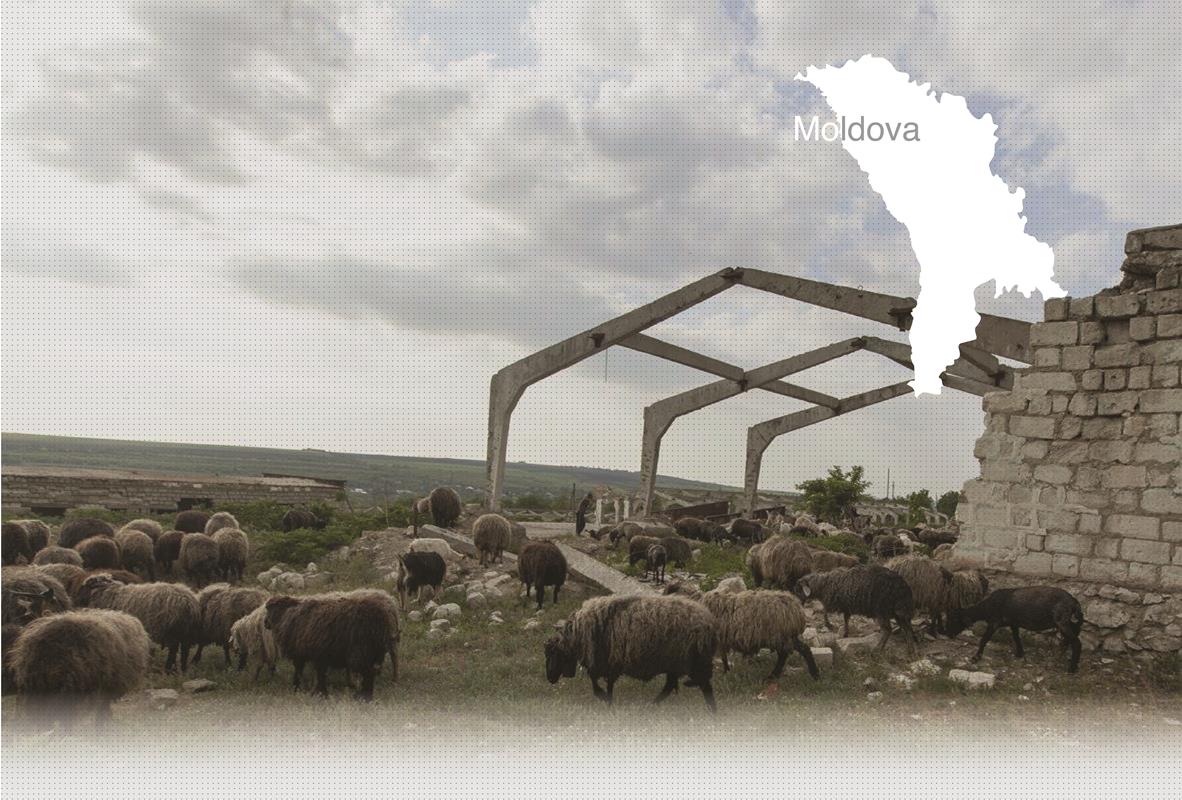

3 Killing site(s)
Serguei L., born in 1928: “Before the gendarmes shot the remaining local Jews and Jews from elsewhere, they assembled them here and placed them in the camp they had created for them. They surrounded several empty Jewish houses with barbed wire, and they put the Jewish prisoners in them. Eventually, almost the entire village was surrounded by barbed wire. I remember that there were three entrances to the camp. At the time, I lived in the neighborhood where Christian homes and the gendarmerie were located. The camp was right in front of my family house, across the road. It depended on the day, but when one of the guards was in a good mood or had a good heart, he would let the villagers approach the camp to barter with Jews. We would give them bread and receive clothes in exchange. There were a few thousand Jews in the camp. Although some Jews would prepare food for the prisoners in large pots they had found in the empty houses, many of them died from hunger. The bodies of the victims were dragged and buried in a special mass grave dug at the Jewish cemetery that was inside the camp.” (Witness N°101M, interviewed in Tîrgul-Vertiujeni, on May 18, 2013)
“Me, originally from the Soroca region, during the temporary occupation of the territory of Moldova by German-Romanian troops, was in the Vertiujeni camp between August 15 and October 1, 1941, which held between 24,000 and 26,000 Soviet citizens of Jewish nationality. On October 1, 1941, there were only 10,000-12,000 left; all the rest died of epidemics caused by total exhaustion and insurmountable labor. Between 80 and 100 people died every day, they were buried in mass graves. […]
I have personally seen the Romanian occupiers force the detainees to carry large stones from the Dniester to the camp, although these stones have to be placed on a large hill. Those who did not have the strength to climb the hill were badly beaten. There have been a few fatal cases. In addition, the data in question have never been used; they always stay there, stacked. Later, Jews from the Vertiujeni camp were transferred to other camps; and ‘peasant camps’ were established in which activists were detained. […]” [Deposition of Fania Frimerman, local resident, given to the State Extraordinary Commission (ChGK) on April 19, 1944; RG22.002M: GARF: 7021- 96-94]
Tîrgul-Vertiujeni is a village in Florești District in northern Moldova. It is located 39km northeast from Florești. Tîrgul-Vertiujeni was created in 1838 as a Jewish agricultural settlement. In 1930, there were 1,843 Jews living in Tîrgul-Vertiujeni (about 90% of its total population.) The Jewish community had several synagogues, ritual baths, two Jewish schools as well as charitable and political organizations. According to YIU’s witness, Dimitri K., born in 1928, Jews from Tîrgul-Vertiujeni were mainly merchants. They owned many shops in the village. There were also some Jewish farmers but most of them used to hire Moldovan peasants to farm so they could work in their shops. As Moldovan families were not numerous in the village, some Jewish neighbors would hire Dimitri as an intermediary so he could find them farm laborers to work the land.
Before the arrival of German and Romanian armies in the village, most of the local Jews managed to leave the village by joining the retreating Red Army and crossing the Dniester river to find shelter on the Russian occupied side. When German and Romanian soldiers arrived in the village in July 1941, they immediately began to persecute the remaining Jews. According to available sources, they were assembled and killed by Romanian soldiers and members of Einsatzgruppe D, the Nazi mobile killing squads.
According to Dimitri K. before the camp was established, there was another shooting of a hundred Jews in the village. The Jews had been rounded up elsewhere, brought to Tîrgul-Vertiujeni and shot on the edge of a local ravine. Jewish men, women, and children were lined up at the edge of the ravine and shot, by at least three Romanian soldiers with submachine guns. The bodies were not buried immediately after the execution. Some of the Jews pretended to fall into the ravine. When the Romanians left, they came out of the ravine and crossed the Dniester river.
In August 1941, a transit camp was created in Tîrgul-Vertiujeni. It was established partially in a Jewish neighborhood, partially in an open field. It was fenced off with barbed wire and guarded by Romanian gendarmes. Columns arrived with hundreds of Jews from all around Bukovina and northern Bessarabia and interned in the camp on their way to Transnistria. In total, about 23,000 Jews passed through the Tîrgul-Vertiujeni transit camp, among them some 13,000 Jews originally detained in Mohilev-Podolsk as well as hundreds of others deported, among others, from the transit camps in Rediul Mare (Dondușeni District) and Rublenița (Soroca District.) According to Soviet archives, between 16,000 and 18,000 Jews died in the camp due to hunger, different diseases, and very harsh living conditions. The archives also mention several executions of Jewish prisoners. Dimitri K. remembers that the bodies of those victims were buried by other prisoners in a nearby ravine. About 10,000 prisoners of the Tîrgul-Vertiujeni transit camp were deported to Transnistria in several convoys of more than 1,600 Jews. The first convoy left the camp on September 12, 1941 and the deportations lasted for several days. Many Jewish prisoners were executed during the deportations by the Romanian gendarmes escorting the columns. The camp was liquidated in October 1941 when the remaining Jews were deported to Transnistria.
Do you have additional information regarding a village that you would like to share with Yahad ?
Please contact us at contact@yahadinunum.org
or by calling Yahad – In Unum at +33 (0) 1 53 20 13 17